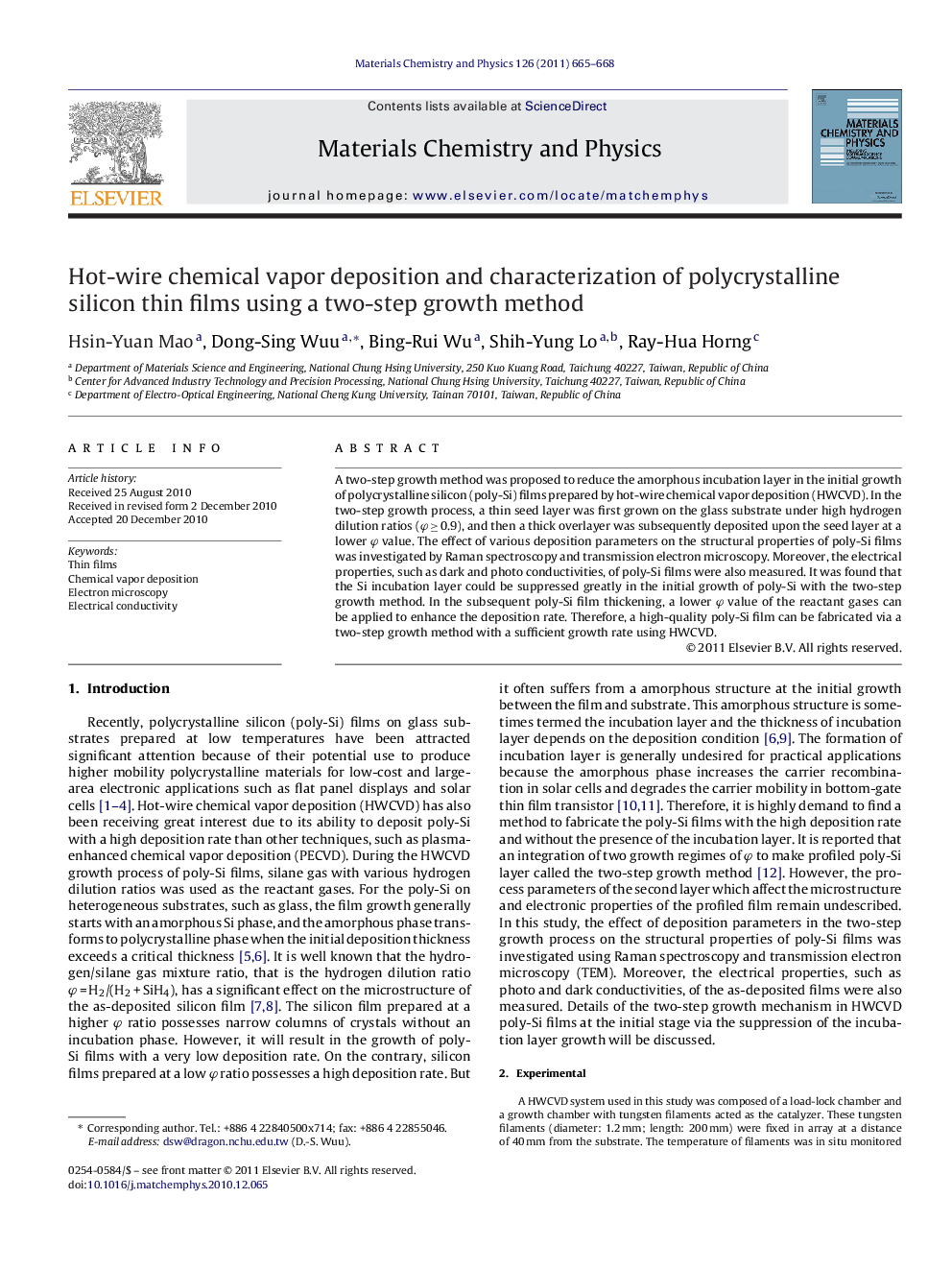| Article ID | Journal | Published Year | Pages | File Type |
|---|---|---|---|---|
| 1524951 | Materials Chemistry and Physics | 2011 | 4 Pages |
A two-step growth method was proposed to reduce the amorphous incubation layer in the initial growth of polycrystalline silicon (poly-Si) films prepared by hot-wire chemical vapor deposition (HWCVD). In the two-step growth process, a thin seed layer was first grown on the glass substrate under high hydrogen dilution ratios (φ ≥ 0.9), and then a thick overlayer was subsequently deposited upon the seed layer at a lower φ value. The effect of various deposition parameters on the structural properties of poly-Si films was investigated by Raman spectroscopy and transmission electron microscopy. Moreover, the electrical properties, such as dark and photo conductivities, of poly-Si films were also measured. It was found that the Si incubation layer could be suppressed greatly in the initial growth of poly-Si with the two-step growth method. In the subsequent poly-Si film thickening, a lower φ value of the reactant gases can be applied to enhance the deposition rate. Therefore, a high-quality poly-Si film can be fabricated via a two-step growth method with a sufficient growth rate using HWCVD.
Research highlights▶ Two-step growth method reduces the Si incubation layer. ▶ 20 nm thick poly-Si film deposited at φ = 0.98 is chosen to be a seed layer. ▶ A lower φ value enhances the deposition rate in the poly-Si film thickening. ▶ Two-step growth method improves the electrical conductivity of poly-Si films. ▶ Hydrogen dilution ratio for the overlayer deposition affects the film crystallinity.
